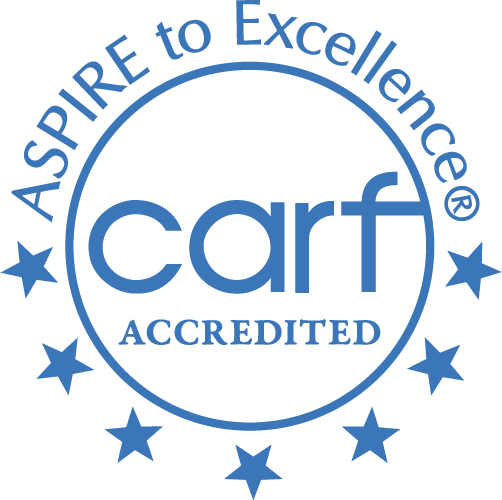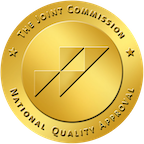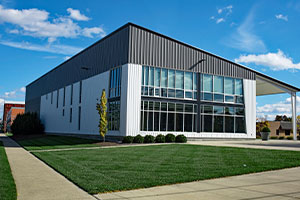
108 Erin Court
Hillsboro, OH. 45133
937-393-9946
Hillsboro, OH has nearby treatment options including: 6 low cost treatment centers, 1 inpatient rehab, 3 drug rehabs that take private insurance like Blue Cross Blue Shield, 2 drug detox, 3 outpatient treatment programs.

For help finding an addiction treatment center, Call us!
All calls are 100% confidential and free
1-877-882-9275



Pickaway Area Recovery Services is 27.5 miles from Hillsboro, OH
Pickaway Area Recovery Services has been providing recovery treatment and rehabilitation services to people who live in the Hillsboro, OH. area. Today, Pickaway Area Recovery Services offers services like contingency management/motivational incentive, group therapy, dual diagnosis drug rehab, cognitive/behavior therapy, group therapy, 12-step facilitation approach and others in keeping with its belief of following rehab treatments that work best to help clients achieve recovery.
This alcohol and drug rehabilitation program also believes the best form of treatment to ensure success is to offer individualized care. Services are available in the following settings - inpatient rehab programs, short term rehab facilities, inpatient detoxification programs, long term treatment centers, outpatient hospital programs and others.
For long term abstinence, sobriety and full recovery Pickaway Area Recovery Services offers an aftercare program. Lastly, Pickaway Area Recovery Services accepts private insurance, cash or self-payment, military insurance, sliding fee scale, state corrections or juvenile justice funds, other state funds and others as forms of payment.



BrightView is 31.1 miles from Hillsboro, OH
BrightView has been providing addiction treatment and rehab services to residents of the Hillsboro area. Today, BrightView offers services like contingency management/motivational incentive, group therapy, dual diagnosis drug rehab, cognitive/behavior therapy, group therapy, 12-step facilitation approach and others in keeping with its philosophy of following rehab treatments that work best to help addicts achieve sobriety.
This addiction treatment center also believes the best form of treatment to ensure success is to offer individualized care. Services are available in the following settings - inpatient drug and alcohol rehabs, short term drug and alcohol rehab programs, inpatient detox centers, long term drug addiction treatment, outpatient counseling and others.
For long term abstinence, sobriety and full recovery BrightView offers an aftercare program. Lastly, BrightView accepts private medical insurance, private pay, military insurance, sliding fee scale, state corrections or juvenile justice funds, other state funds and others as forms of payment.



Clermont Recovery Center Inc is 31.1 miles from Hillsboro, OH
Clermont Recovery Center Inc has been providing ongoing addiction treatment and rehab services to people who live in the Hillsboro, OH. area. Today, Clermont Recovery Center Inc offers services like contingency management/motivational incentive, group therapy, dual diagnosis drug rehab, cognitive/behavior therapy, group therapy, 12-step facilitation approach and others in line with its philosophy of following rehabilitation treatments that work best to help people achieve sobriety.
This alcohol and drug treatment facility also believes the best form of treatment to ensure success is to offer individualized care. Services are available in the following settings - inpatient drug addiction treatment, short term drug rehab programs, inpatient detox centers, long term drug and alcohol rehabs, outpatient substance abuse treatment services and others.
It also believes that an aftercare program is integral in promoting recovery in the long term. Lastly, Clermont Recovery Center Inc accepts private medical insurance, private pay, military insurance, sliding fee scale, state corrections or juvenile justice funds, other state funds and others as payment forms.
While a family history of substance abuse can increase your risk of developing a similar issue due to both genetic and environmental factors, it does not mean you are destined to become a substance abuser. Genetics can make up about 40-60% of the risk for addiction, but the remaining percentage is influenced by environmental and personal factors.
Environmental influences can include your upbringing, your parents' behaviors, your exposure to drugs or alcohol, your social circle, and your experiences with stress and trauma. Personal factors involve your individual personality traits, your mental health, and your coping mechanisms. All these can significantly contribute to whether or not you develop a substance use disorder.
Importantly, risk is not destiny. Just because you are at a higher risk doesn't mean you will inevitably develop a substance abuse problem. Prevention strategies can be highly effective. These might include:
Education: Understanding the risks and consequences of substance abuse can deter initiation of drug use.
Healthy Coping Mechanisms: Developing healthy ways to cope with stress, such as through exercise, meditation, hobbies, or therapy, can reduce the need to turn to substances for relief.
Strong Support Networks: Having supportive and understanding friends, family, or mentors can provide a safety net when facing potential pitfalls.
Mental Health Care: Ensuring good mental health through therapy or counseling can reduce the risk, as mental health disorders can increase the likelihood of substance abuse.
Delaying Substance Use: The later in life a person first uses drugs, the less likely they are to develop a problem.
Remember, even if substance abuse does become an issue, it is not a life sentence. Effective treatments are available that can help individuals overcome addiction and lead healthy, productive lives. If you're worried about your risk, it might be helpful to discuss your concerns with a healthcare provider, a counselor, or a trusted person in your life.
Substance abuse significantly increases the risk of suicide, particularly among vulnerable populations such as LGBTQ+ (lesbian, gay, bisexual, transgender, queer, and others) youth. This heightened risk stems from a combination of factors associated with both substance abuse and the unique challenges faced by LGBTQ+ youth. Here's a closer look at these factors:
Mental Health Disorders: Substance abuse often co-occurs with mental health disorders such as depression, anxiety, and bipolar disorder, which are known risk factors for suicide. LGBTQ+ youth experience these mental health conditions at higher rates than their heterosexual and cisgender peers, partially due to the minority stress they face.
Minority Stress: Minority stress refers to the chronic stress experienced by marginalized groups, including LGBTQ+ individuals. It can include experiences such as discrimination, stigma, bullying, and family rejection, which can increase feelings of hopelessness and contribute to both substance use and suicidal ideation.
Substance Use and Suicidal Behavior: Substance use can lead to increased impulsivity, decreased inhibition, and intensified feelings of despair, making a person more likely to attempt suicide. It can also exacerbate feelings of isolation and hopelessness, further increasing the risk.
Social Isolation: Many LGBTQ+ youth feel socially isolated, either because they are not out to their peers or because they face rejection after coming out. This isolation can lead to increased substance use and a higher risk of suicide.
Family Rejection: Family rejection related to an individual's sexual orientation or gender identity can lead to increased substance use and heightened suicide risk. LGBTQ+ youth who do not receive support from their families are particularly vulnerable.
Lack of Access to Mental Health Services: Many LGBTQ+ youth struggle to access mental health and substance use treatment services, which can help manage risk factors for suicide. Barriers to access can include lack of insurance, stigma, and a shortage of providers who offer LGBTQ+-inclusive care.
Intersectionality: LGBTQ+ youth who belong to other marginalized groups (e.g., racial/ethnic minorities) often face additional layers of discrimination and stress, which can further increase their risk of substance abuse and suicide.
Efforts to prevent suicide among LGBTQ+ youth include providing access to culturally competent mental health and substance use treatment, fostering supportive environments in schools and communities, and advocating for policies that protect LGBTQ+ youth from discrimination and harassment. It's also crucial to provide support for families of LGBTQ+ youth, as family acceptance has been shown to protect against suicide risk.
Several relationship factors can increase the risk of developing a drug or alcohol abuse problem. These include:
National Non Profit Helpline - 1-877-882-9275
Our National Non Profit Helpline is a 24/7, 365-day-a-year treatment referral and information service for individuals and families faced with mental and/or substance use disorders.
All calls are strictly confidential
Our service provides referrals to licensed treatment facilities, support groups, and community-based organizations. You don't have to struggle alone with addiction. Help is just a phone call away. Call 1-877-882-9275 now to get the help you need and deserve.
© Copyright 1998 - 2022 All Rights Reserved. Content is protected under copyright laws, do not use content without written permission.